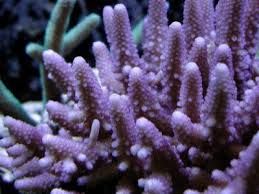Thankyou that helps alot. Will any of the
SPS kill each other? Right now the only ones that are somewhat close to each other are my Purple Nana and my green monti cap. They are about 1 1/2" apart. Also one quick question, how do you actually feed the coral? I've always thought that they feed on extra food when I feed my fish and on my lights.
SPS Small Polyped Scleractinians - Sometimes known as Small Polyped Stony corals. These are hard corals that have extremely small polyps. They are typically on the difficult side and require Metal Halide lighting or dense Power Compact or T5 arrays. These corals are prized for their rareness and ability to be easily fragged into multiple colonies.
Difficult to say to be honest in regards to the nana/cap issue. chances are the nana will out sting the monti, but the monti has growth rate potential on its side. even then, its different scenarios for different tanks.
As for feeding (which is a huge subject) , then yes the corals will pick up the very fine particulates that come in your frozen and flake foods as well as feeding on the fish waste itself. which is why for a great many years people believed most corals didnt actually need feeding and got all thier nutrition from light. these days we are a little wiser and accept that light only fullfils a portion of the nutritional requirements of photosynthetic corals and accept that they are in fact quite greedy little beggars that can tuck away food far more than we at first thought..
Generally you can add anything you like as long as its small enough, and differing corals will take different sized foods dependent on the polyps capabilities and physical size.
red plankton, rotifers and a whole host of other small food types are ideal (you can even blend standard fish food into very fine slush and add that). but be carefull with the amount to start with. heavy feeding is good as long as you give the system time to adapt to it. In a healthy system, as you increase the input over time, the critter population will expand to take care of the surplus whilst your corals grow and take up more of what you put in. the corals also need to learn and recognise the food sources (ie they will after a while start to recognise the chemical signatures of foods added and expand accordingly at feeding times if you put a small squirt of food in ten mins prior to the main feed.
I mainly feed my fish several times over the day and then add a dedicated mix of fine foods after lights out when the majority of corals have expanded fully into night time feeding mode, but differing systems will have different scenarios with some tanks having full polyp extention all day long so its basically trial and error.
Ultimately though, let your test kit readings direct you. learn when to back off a bit and when its ok to increase based on what your No3 and Po4 readings are telling you. also keep a log so you can see trends. a 0.2ppm No3 climb per week may not seem alot, but it can catch you out if you ignore it for 3 months. so what you are realy aiming for is to be able to chuck in as much food as possible without upsetting your tanks stability...food is good, exess nutrients are bad....its allways a balancing act.
As a very loose comment Id say in general its easyer to heavy feed tanks with alot of corals, compared to those with just a few (many more mouths to catch passing prey) so it is a slow process, Theres no point in chucking in food that isnt being utilised to the best of the stocks capability early on so build it up over time and as your coral collection grows.
Regards
Simon.
The rewards though ime are worth the extra effort. You'll generally see better growth rates, better colouration, and more durability from the corals in relation to other perameters.












